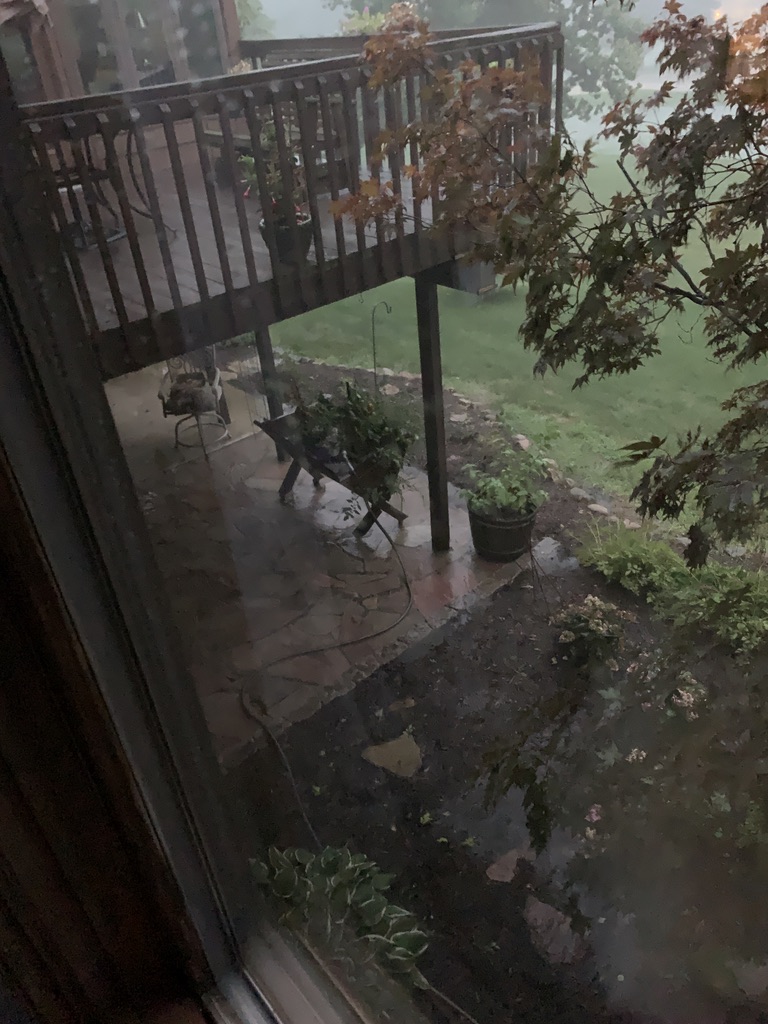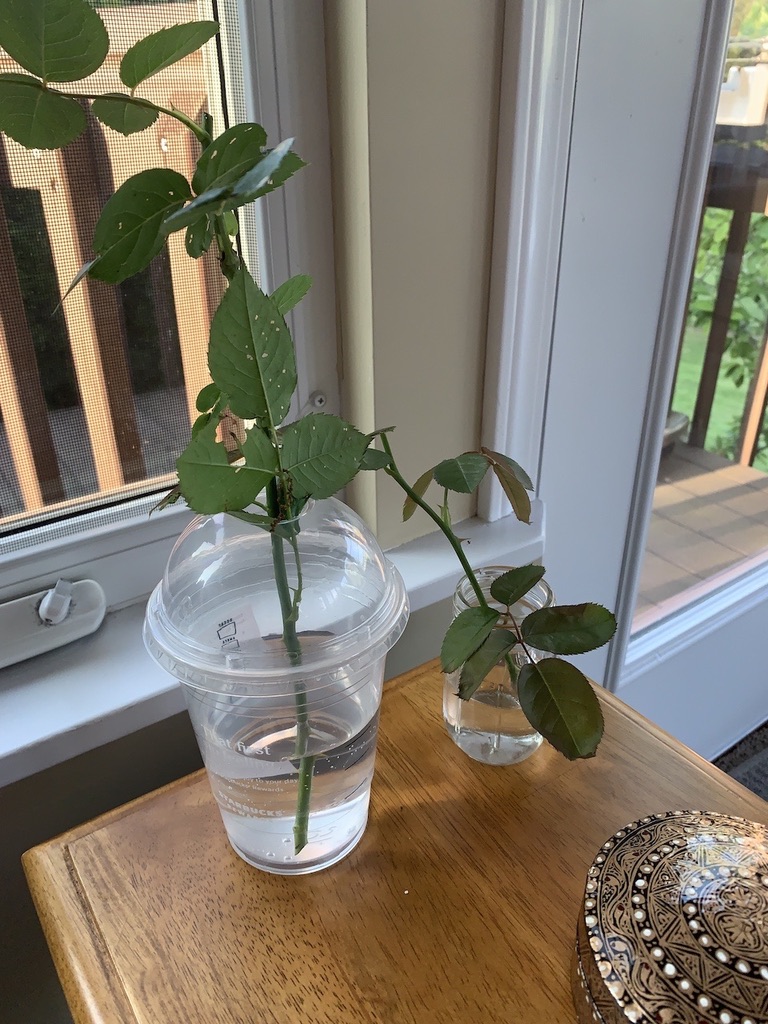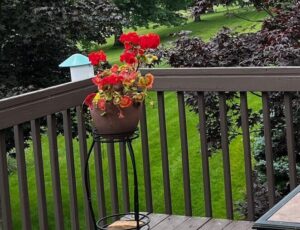Over the summer, I have been sharing my attempt to propagate a beautiful yellow rose growing beautifully in my friend Jean’s back garden. It is a lovely rose-floribunda with a bright yellow color and a fantastic scent.
Jean purchased this rose sometime in the 1970s, and she doesn’t know the name. That means I can’t go out and buy one for myself, so I attempted to grow one from the plant.
Now I have never done this before. I have had roses in all my gardens in the past and did quite well with them. However, my attempts to grow roses at my present Ohio home have proved to me, I have a lot more to learn.

Before, I share my rose problems with you, I would like to set the stage for roses in general.
Roses
The 3 Main Rose Categories
- Old Garden Roses. Often referred to as “antique” roses and “historic” roses, the Old Garden Rose has been around since before 1867
- Wild Roses single bloom five petal flower almost always pink in color
- Modern Garden Roses bred after 1867 and underwent multiple cultivations. They bloom multiple times or continuously caompared to the old fashion roses and have bigger and perhaps more beautiful blooms but they tend to be be less resistant to disease, more tempermental growth and have less scent. The modern rose can be subcatagorized as seen below. A fantastic Jackson & Perkins guide can be found HERE
- Climbing Roses
- Hybrid Tea Roses.
- Grandiflora Roses
- Floribunda Roses.
- Polyantha Roses
For my purposes today, I am mainly concerned with grandfloras and floribundas.
Grandiflora Roses
Regarded as a subgroup class of hybrid tea roses with floribunda features, the grandiflora rose was created in the last century. The perfect combination between the two grandfloras presents elegant showy blooms that appear in clusters like the hybrid tea rose and a constant growth cycle like that of the floribunda. Each cluster also consists of three to five blooms. Overall, their shrubs are larger and stand taller than hybrid teas. While not as popular as its close cousins, the grandlora is still quite hardy and vigorous, so don’t overlook it for your garden and landscaping. Shop Grandiflora Roses for Sale
Floribunda Roses
Floribunda roses are another favorite rose class. Similar to grandifloras, a floribunda rose presents a large cluster of flowers. With a continuous bloom, it will last much longer than the six- to the seven-week cycle of hybrid tea roses or grandiflora roses. Floribundas are also much easier to care for and offer practically a hands-free experience.
The Jackson & Perkins website indicate the floribunda can grow up to six feet tall,, which is way too big for my little garden. However, they indicate the grandiflora is a smaller plant, closer to a mix of a hybrid tea & a floribunda. They recommended this type be used in flower borders,, so I think this is the rose I need to look for.
Jean’s husband s the gardener in the family,, and he keeps this little yellow beauty well trimmed and shaped to about a three by three feet area. Therefore most likely a Grandiflora. I will keep looking for this rose online and at my garden centers. Meanwhile, I will make one last attempt to propagate the rose.
Proprograting Roses
I am going to tell you about four ways to propagate a rose by taking rose cutting.
1. Stem Cutting
Firstly, let me say there seems to be a significant difference in opinion as to when and what type of rose stem to take. One place told me to do late spring & early summer cutting from new growth. I now found other sides that say it’s better to take semihard thicker rose stems and to take in late summer. This choice is essential, and where I think I made my main error. I took an outside new growth stem. They were most likely softwood cuttings. My research indicates that softwood cuttings are more difficult to grow a softwood cutting. I certainly found that to be the case.
Cut an angle cut at the top and bottom of the stem and remove all leaves. Take the bottom cutting just below a growth node. Stick the end of the cutting in rooting compound powder and then make a hole in your soil and insert the cutting.

See HERE for a hardcopy of the instructions.
Water well and place the pot in a sunny location. Check every couple of days to see if water is needed. Growth from the top side areas should begin in 10 – 15 days.
Keep checking your plant. Make sure to keep moist but not wet and that the sun is not burning the leaves but maintain some sun, fertilize once with slow-release rose fertilizer.
I also tried putting the cutting in a potato- Nothing happened here because the cutting fell out after a few days in the garden. See technique HERE
I must say that I placed the potato cutting,, and the first cut in the pot was outside n the northeast east side of the house. But it has rained almost every day since June here in Ohio. I have never seen so much rain. We broke records. I believe the excess rain was too much for my cuttings, and they just rotted or were washed away.
2. Water cuttings
Another method is to take the cutting as stated above and put it in a glass with water. The instructions suggest I then place the jar in a sunny room and forget about it for ten days. Well, I did that, and nothing happened after three weeks. See HERE. This attempt was Failure number 3. I am unhappy and disappointed now. I thought it was going to be an easy – peezy thing to do. Like geranium cuttings, but I was greatly mistaken.

3. Greenhoue Cuttings
Final Attempt for propagation. I just can’t give up. That rose is just so perfect. I have looked in catalogs and in local garden centers,, but I am not sure if those roses are this rose, if you get my meaning. I have given up on hybrid tea roses. This rose is a floribunda.
If Jean is agreeable, I am going to try one last time. This time I will take a hard thick stick from the center of the plant. I found a guy on youtube – Mike Kincaid.
He is using a soda bottle as a miniature greenhouse. Mike said it is better to take cuttings in July and August, not in June, as I did. He also stressed the need to take semi-hard wood stalks to have a better chance for success. Not the new growth I took.
One nice feature of this video is that he demonstrates how he took and planted the cuttings andrned to the pot and showed a biweekly update on how the cutting was growing. He finalized the video updating by actually returning in the Spring to transplant the cutting into pots.
I don’t drink soda. I’ll get a bottle or two from my kids and try propagating roses one last time. My swan song, so to speak. Hopefully, it will work. I want to try again- I think it wi be soo cool if I actually do it!
I shall keep you guys advised as I continue with this little escapade. Have any of you had good luck with rose cutting propagation? Isf so , please share
Dara








